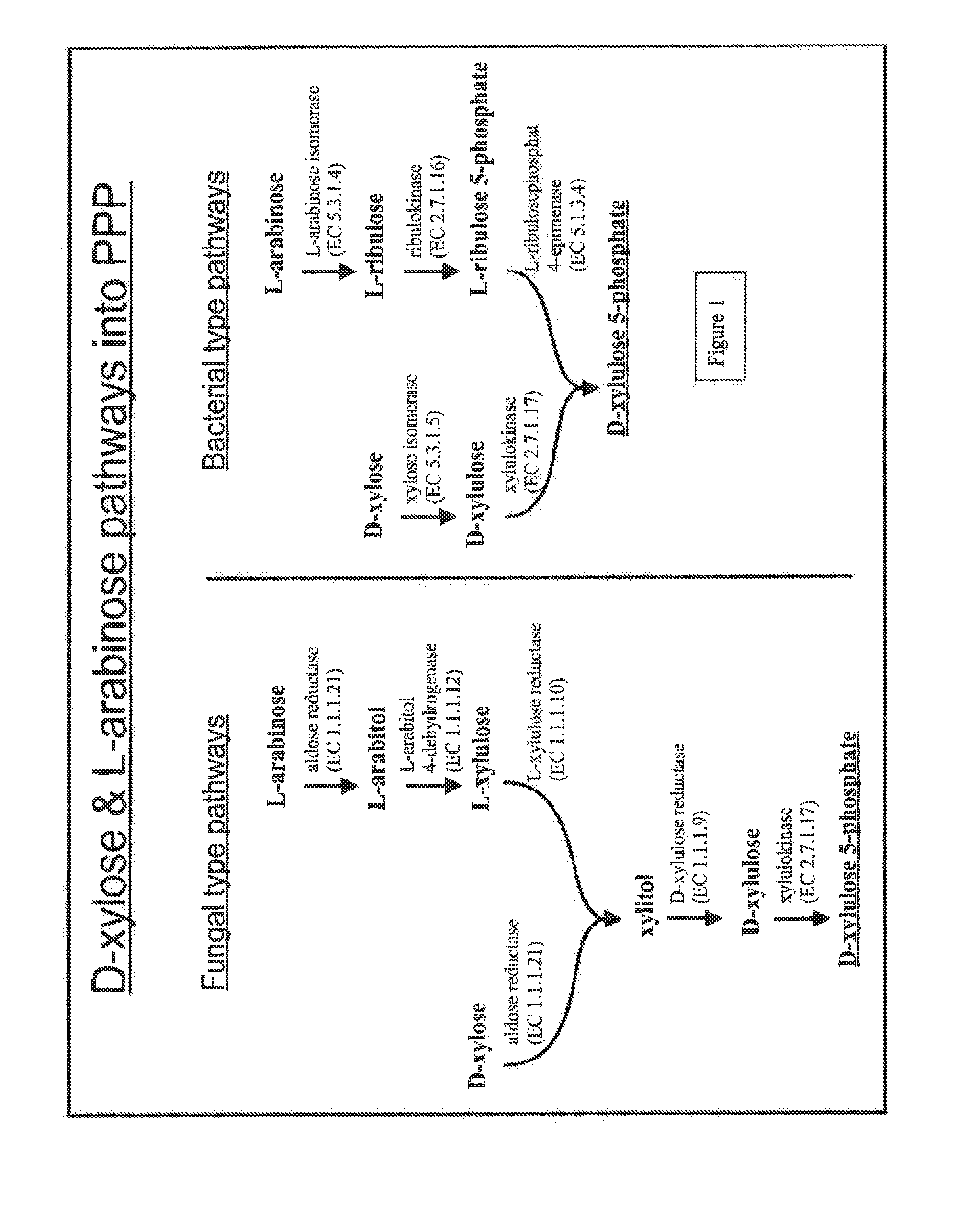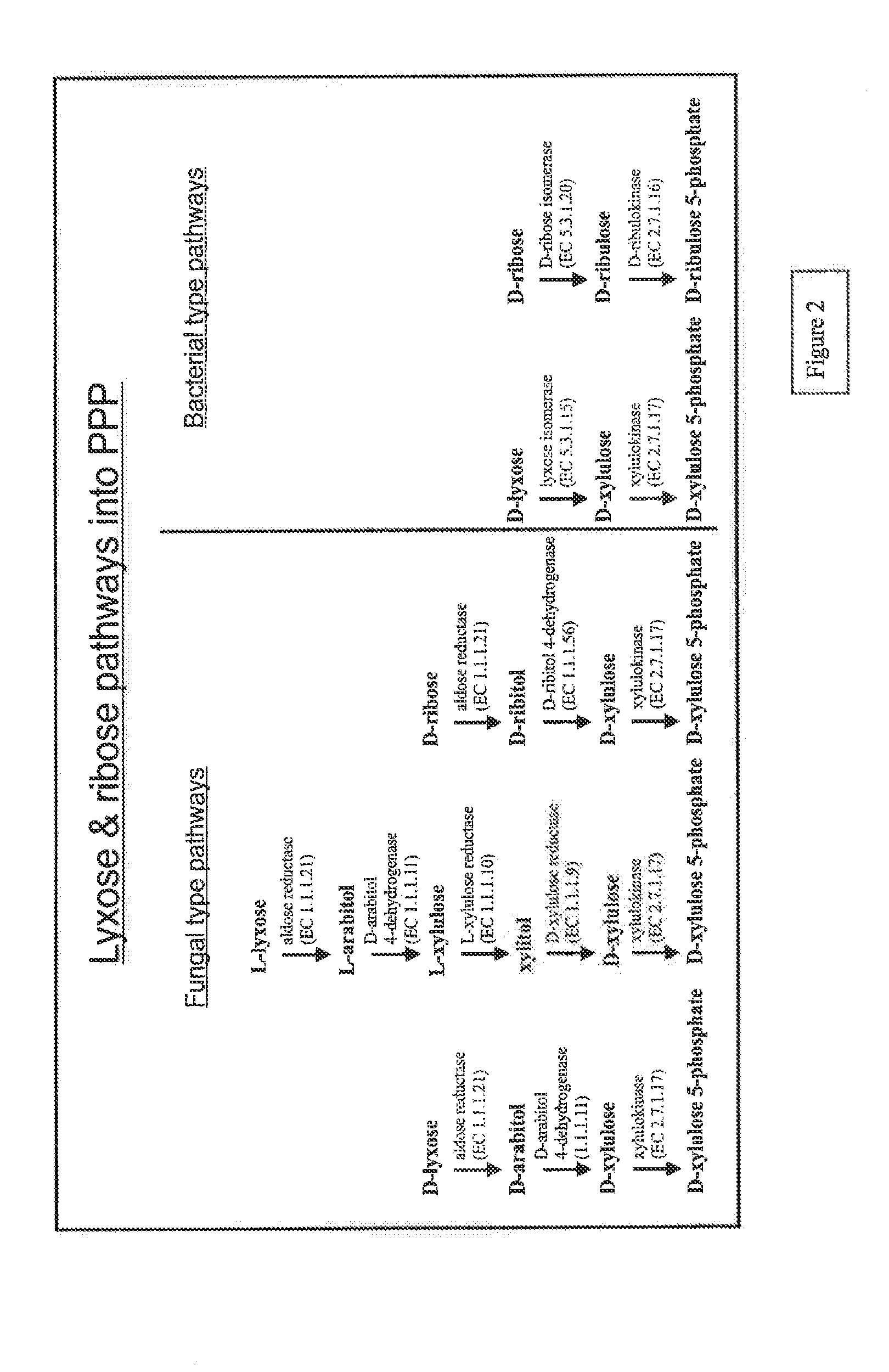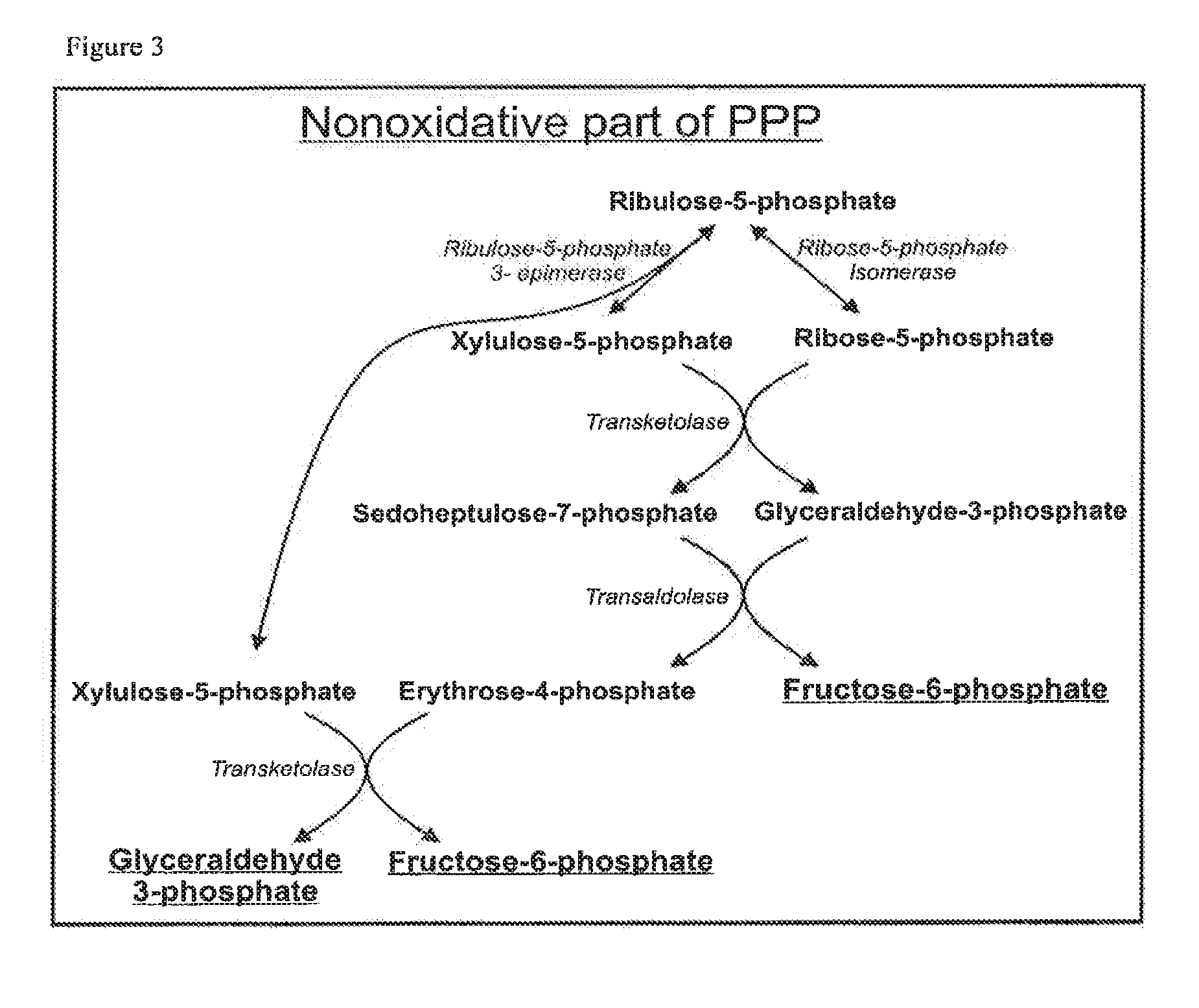Microorganism expressing xylose isomerase
a technology of xylose and isomerase, which is applied in the field of microorganisms, can solve the problems of low xylose metabolism rate, inability to efficiently convert, and inability to metabolize 5-carbon sugars that constitute up to one-third of lignocellulosic sugar materials, etc., and achieves low co2 emissions and high activity.
- Summary
- Abstract
- Description
- Claims
- Application Information
AI Technical Summary
Benefits of technology
Problems solved by technology
Method used
Image
Examples
example 1
Construction of an S. Cerevisiae Strain Expressing the Lactobacillus xylosus XI and the Pichia stipitis Xylulose Kinase
example 1a
TOPO Cloning of the D-Xylose Isomerase Gene from Lactobacillus xylosus (Lactococcus Lactis, Strain DSM 20175), Using Primer Sequences that are Based on NCBI Accession Code AF092042 (SEQ ID No 1)
[0385]The entire L. xylosus D-xylose isomerase gene (Lx XI) was PCR amplified from DNA obtained from the strain DSM 20175 using the primers identified by SEQ. ID. NO. 2 and SEQ. ID. NO. 3. The coding region of xylose isomerase gene cloned by PCR of Lactococcus lactis strain DSM 20175, using primers shown in SEQ ID No 2 and SEQ ID No 3, is shown in SEQ ID No 17. A restriction-site for NheI, proximal to the ATG-start codon and a restriction-site for XhoI, distal to the stop-codon was introduced flanking the Lx XI gene. As template, DNA from the L. xylosus strain was used in a concentration of 0.2 ng / μl PCR-reaction. PCR was performed at 30 cycles of 30 seconds at 96° C., 30 seconds at 50° C., and 150 seconds at 72° C., followed by a final incubation of 10 minutes at 72° C. using Phusion High Fi...
example 1b
Construction of Plasmid LxXI-2a Containing the L. Xylosus Xylose Isomerase (LxXI) Gene Under Control of the GPD Promoter and the CYC1 Terminator from S. cerevisiae
[0386]The E. coli / S. cerevisiae high-copy shuttle vector P426-GPD (Mumberg et al., 1995) was digested with SpeI and XhoI and the resulting termini were dephosphorylated with alkaline phosphatase. Similarly, the DNA fragment encoding the L. xylosus xylose isomerase gene was released from the vector pCR-Blunt 2 LxXI (described in Example 1a) by digestion with NheI and XhoI. The resulting linearized plasmid P426-GPD and the DNA fragment encoding ThXI were electrophoretically separated on a 1% low melt agarose gel and isolated. The two DNA fragments were ligated together resulting in the plasmid named LxXI-2a.
PUM
| Property | Measurement | Unit |
|---|---|---|
| temperatures | aaaaa | aaaaa |
| temperatures | aaaaa | aaaaa |
| length | aaaaa | aaaaa |
Abstract
Description
Claims
Application Information
 Login to View More
Login to View More - R&D
- Intellectual Property
- Life Sciences
- Materials
- Tech Scout
- Unparalleled Data Quality
- Higher Quality Content
- 60% Fewer Hallucinations
Browse by: Latest US Patents, China's latest patents, Technical Efficacy Thesaurus, Application Domain, Technology Topic, Popular Technical Reports.
© 2025 PatSnap. All rights reserved.Legal|Privacy policy|Modern Slavery Act Transparency Statement|Sitemap|About US| Contact US: help@patsnap.com



